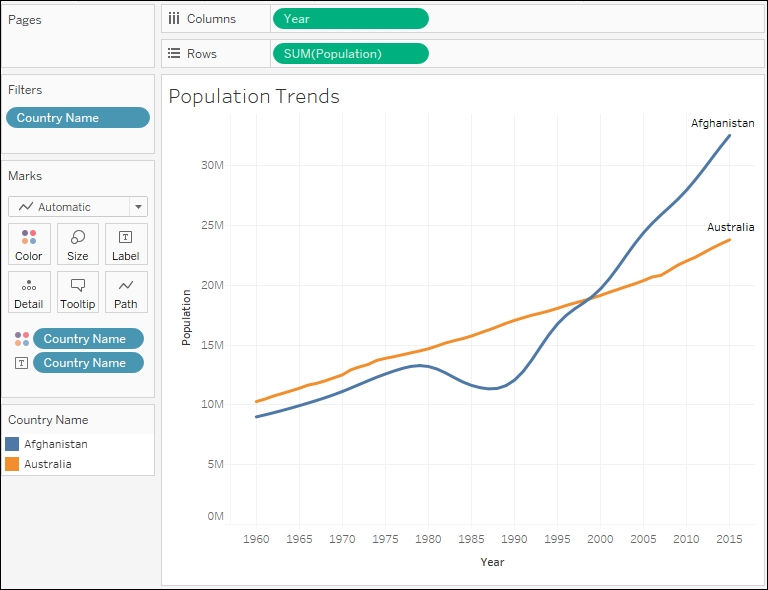Trending
World Population.xlsx is included in the Chapter 08 directory. It contains one record for each country for each year from 1960 to 2015, measuring population. Using this data set, let's take a look at the historical trends of various countries. Create a view similar to the following, which shows the change in population over time for Afghanistan and Australia. You'll notice that Country Name has been filtered to include only Afghanistan and Australia and the field has additionally been added to the Color and Label shelves:

From this visualization alone you can make several interesting observations. The growth of the two countries' populations was fairly similar up to 1980. At that point the population of Afghanistan went into decline until 1988 when the population of Afghanistan started to increase recover. At some point around 1996 the population of Afghanistan exceeded that of Australia. The gap has grown wider ever since.
While we have a sense of the two trends, they become even...



























































